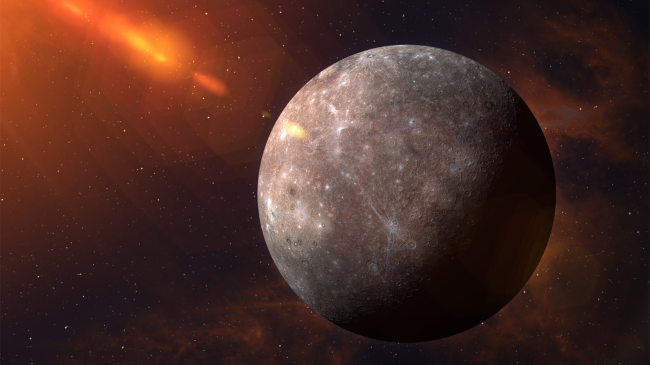
iStockphoto
Planetary scientists have discovered potential salt glaciers located near the north pole of Mercury that might reveal habitable zones similar to arctic areas of Earth.
You know what that means, right? Aliens! Maybe!
“Our finding complements other recent research showing that Pluto has nitrogen glaciers, implying that the glaciation phenomenon extends from the hottest to the coldest confines within our Solar System. These locations are of pivotal importance because they identify volatile-rich exposures throughout the vastness of multiple planetary landscapes,” said Alexis Rodriguez, lead author of a paper published in the Planetary Science Journal.
“These Mercurian glaciers, distinct from Earth’s, originate from deeply buried Volatile Rich Layers (VRLs) exposed by asteroid impacts. Our models strongly affirm that salt flow likely produced these glaciers and that after their emplacement they retained volatiles for over 1 billion years,” said co-author Bryan Travis.
Scientists have long been trying to find signs of alien life on other planets.
Mars, being one of Earth’s closest neighbors, has been a major focus of this research.
Venus has as well due to its proximity to Earth and it being considered Earth’s twin or sister planet.
Mercury is the third closest planet to Earth, but it being even closer to the sun than Venus has made it less of a focus, until now.
“Specific salt compounds on Earth create habitable niches even in some of the harshest environments where they occur, such as the arid Atacama Desert in Chile. This line of thinking leads us to ponder the possibility of subsurface areas on Mercury that might be more hospitable than its harsh surface. These areas could potentially act as depth-dependent ‘Goldilocks zones,’ analogous to the region around a star where the existence of liquid water on a planet might enable life as we know it, but in this case, the focus is on the right depth below the planet’s surface rather than the right distance from a star,” Rodriguez said.
“This groundbreaking discovery of Mercurian glaciers extends our comprehension of the environmental parameters that could sustain life, adding a vital dimension to our exploration of astrobiology also relevant to the potential habitability of Mercury-like exoplanets.”
Based on their findings, study co-author Jeffrey S. Kargel posits that “water released through volcanic degassing may have temporarily created pools or shallow seas of liquid or supercritical water (like a dense, highly salty steam)” on Mercury’s surface.
Further study is, of course, still needed to make more certain determinations.